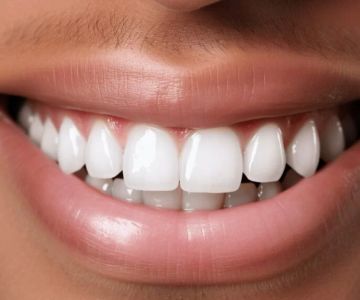How to Teach Kids About Dental Hygiene
Teaching kids about dental hygiene is an essential part of raising healthy and confident individuals. Good oral health habits established during childhood can significantly impact a child’s overall well-being and help prevent dental problems later in life. While it might seem challenging, educating children about dental hygiene can be a fun and rewarding experience for both parents and kids. In this guide, we’ll explore practical tips and creative strategies to help children understand and value oral health. For expert advice, visit Dentistry Toothtruth.
1. Start Early to Establish a Routine
Building good dental habits begins as soon as a child’s first tooth appears. Pediatric dentists recommend cleaning an infant’s gums with a soft cloth and introducing a baby toothbrush once teeth emerge. Teaching kids to brush twice daily with fluoride toothpaste is a fundamental first step. Making this a family routine reinforces the importance of dental hygiene and creates a positive association with oral care.
2. Make Learning Fun with Interactive Tools
Children learn best through play and engagement. Use colorful toothbrushes, flavored toothpaste, and interactive apps that guide proper brushing techniques. Many apps feature timers and games that encourage children to brush for the recommended two minutes. Additionally, using dental models to demonstrate brushing and flossing can make learning hands-on and enjoyable.
3. Explain the "Why" Behind Dental Hygiene
Kids are naturally curious, so explaining the reasons for dental hygiene can be a great motivator. Use simple language to describe how brushing removes plaque and prevents cavities. Visual aids like diagrams or videos can illustrate the impact of good and poor oral hygiene. Highlighting the connection between healthy teeth and a bright smile can also inspire kids to take care of their teeth.
4. Incorporate Healthy Eating Habits
A balanced diet plays a crucial role in maintaining oral health. Teach kids about "tooth-friendly" foods like fruits, vegetables, and dairy products, while discussing the risks of sugary snacks and drinks. Using examples, such as how sugary sodas can cause cavities, helps children make informed food choices. Cooking healthy meals together is another excellent way to involve them in their oral health journey.
5. Lead by Example
Children often mimic the behavior of adults. Demonstrating good oral hygiene practices, like brushing and flossing regularly, sets a powerful example. Make brushing a family activity where everyone participates. Parents can also share personal stories about dental visits to alleviate fears and emphasize the importance of professional dental care.
6. Reward Positive Behavior
Positive reinforcement can motivate kids to stick to their oral hygiene routine. Create a reward system, such as a sticker chart, where children earn a prize for consistently brushing and flossing. Celebrating milestones, like a cavity-free dental check-up, reinforces the value of good habits. Rewards don’t have to be elaborate—a trip to the park or extra playtime can be effective incentives.
Conclusion: Empower Your Child for Lifelong Dental Health
Teaching kids about dental hygiene is a vital investment in their long-term health. By starting early, making learning fun, and leading by example, parents can help their children develop habits that will last a lifetime. For personalized guidance and professional dental care, visit Dentistry Toothtruth. Take the first step today toward a brighter, healthier smile for your child!


 Westgate Dental Arts
Westgate Dental Arts Coventry Family Dental
Coventry Family Dental Familia Dental
Familia Dental Dr. Daniel S. Fife, DDS
Dr. Daniel S. Fife, DDS Dentistry At Suburban Square: Michael I. Wollock, DMD
Dentistry At Suburban Square: Michael I. Wollock, DMD Comfort Care Dental
Comfort Care Dental The Importance of Oral Health Education During Pregnancy for a Healthy Pregnancy
The Importance of Oral Health Education During Pregnancy for a Healthy Pregnancy Why Skipping Dental Checkups Can Lead to Bigger Oral Health Problems
Why Skipping Dental Checkups Can Lead to Bigger Oral Health Problems Advantages of Porcelain Dental Restorations
Advantages of Porcelain Dental Restorations Best Tips for Brushing Your Teeth Properly for Healthy Gums: Essential Techniques for Oral Health
Best Tips for Brushing Your Teeth Properly for Healthy Gums: Essential Techniques for Oral Health How Can Diabetes Cause Tooth and Gum Problems? Preventing and Managing Oral Health Issues
How Can Diabetes Cause Tooth and Gum Problems? Preventing and Managing Oral Health Issues Healthy Habits for Promoting Good Oral Health and Hygiene: Tips for a Healthy Smile
Healthy Habits for Promoting Good Oral Health and Hygiene: Tips for a Healthy Smile